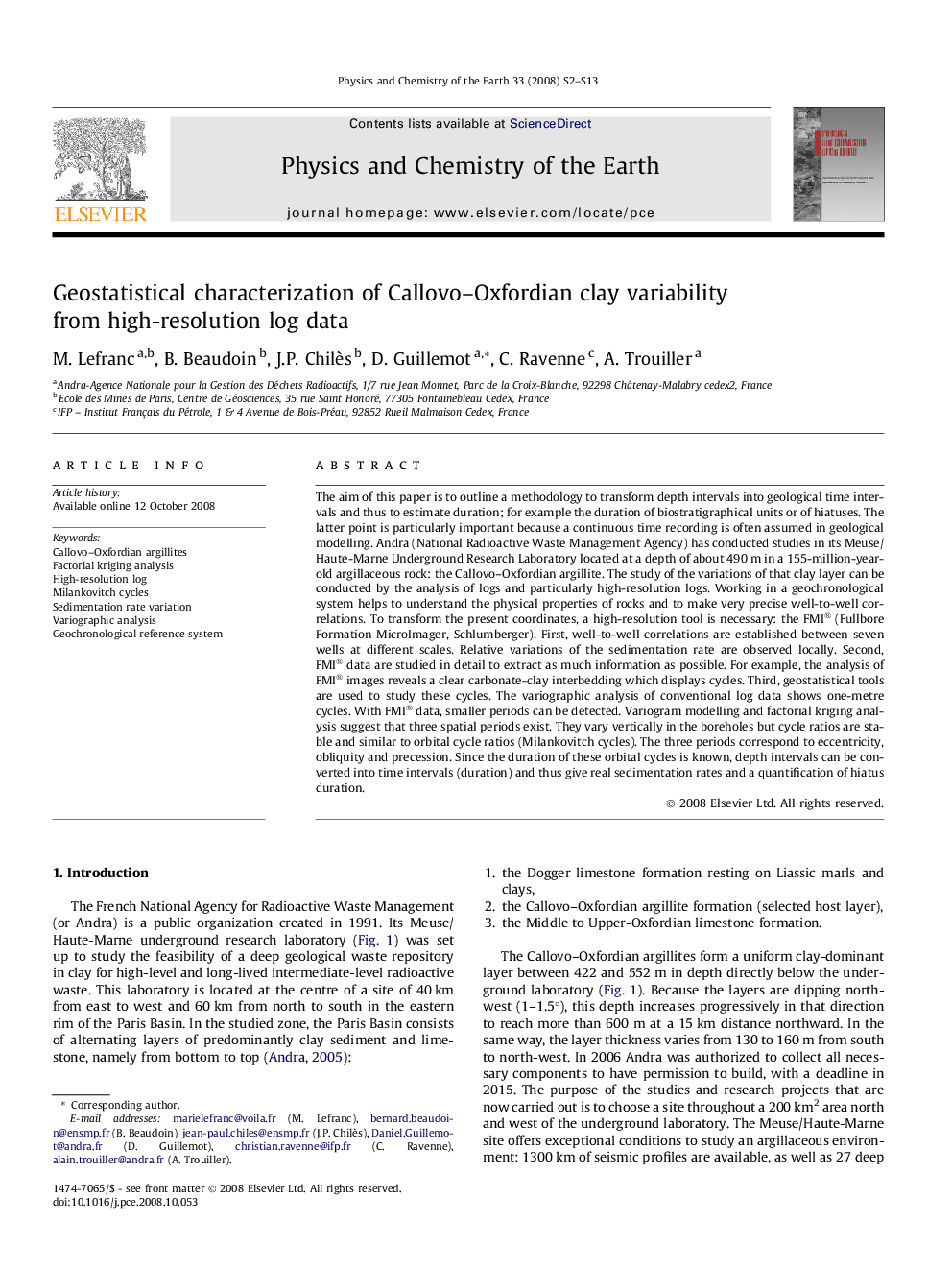| Article ID | Journal | Published Year | Pages | File Type |
|---|---|---|---|---|
| 4721604 | Physics and Chemistry of the Earth, Parts A/B/C | 2008 | 12 Pages |
The aim of this paper is to outline a methodology to transform depth intervals into geological time intervals and thus to estimate duration; for example the duration of biostratigraphical units or of hiatuses. The latter point is particularly important because a continuous time recording is often assumed in geological modelling. Andra (National Radioactive Waste Management Agency) has conducted studies in its Meuse/Haute-Marne Underground Research Laboratory located at a depth of about 490 m in a 155-million-year-old argillaceous rock: the Callovo–Oxfordian argillite. The study of the variations of that clay layer can be conducted by the analysis of logs and particularly high-resolution logs. Working in a geochronological system helps to understand the physical properties of rocks and to make very precise well-to-well correlations. To transform the present coordinates, a high-resolution tool is necessary: the FMI® (Fullbore Formation MicroImager, Schlumberger). First, well-to-well correlations are established between seven wells at different scales. Relative variations of the sedimentation rate are observed locally. Second, FMI® data are studied in detail to extract as much information as possible. For example, the analysis of FMI® images reveals a clear carbonate-clay interbedding which displays cycles. Third, geostatistical tools are used to study these cycles. The variographic analysis of conventional log data shows one-metre cycles. With FMI® data, smaller periods can be detected. Variogram modelling and factorial kriging analysis suggest that three spatial periods exist. They vary vertically in the boreholes but cycle ratios are stable and similar to orbital cycle ratios (Milankovitch cycles). The three periods correspond to eccentricity, obliquity and precession. Since the duration of these orbital cycles is known, depth intervals can be converted into time intervals (duration) and thus give real sedimentation rates and a quantification of hiatus duration.
